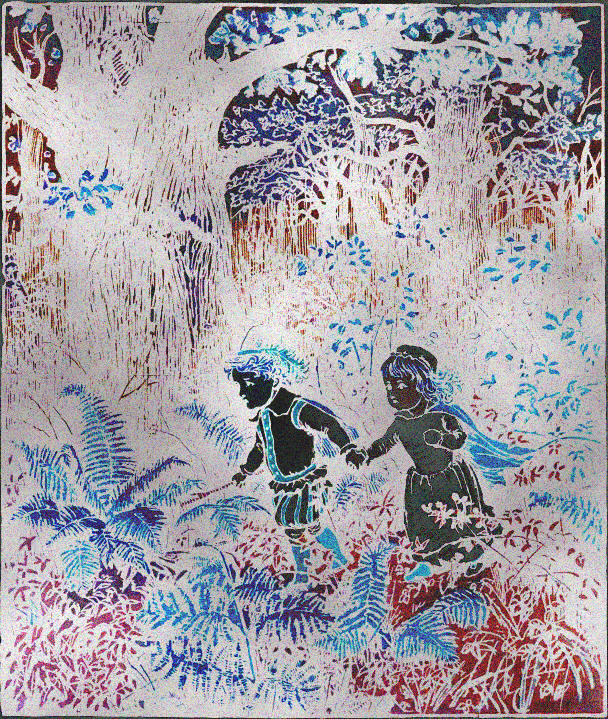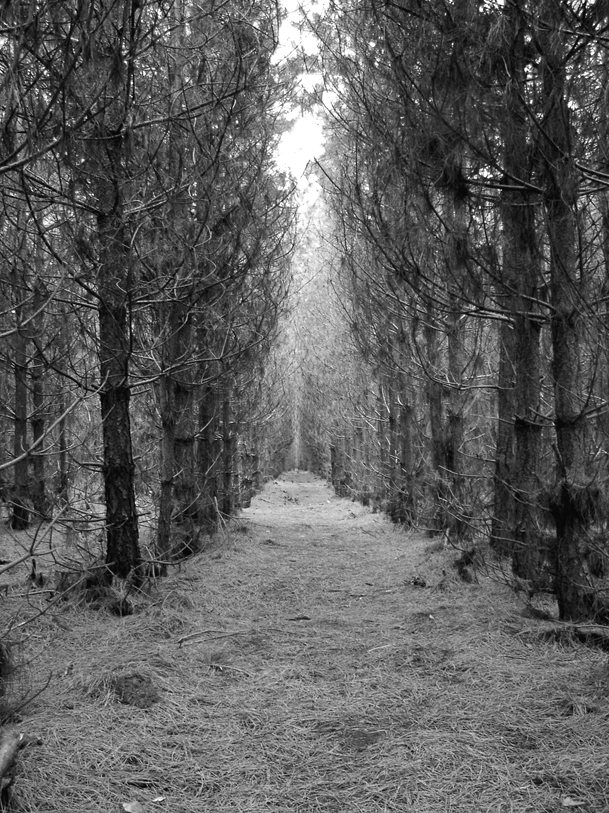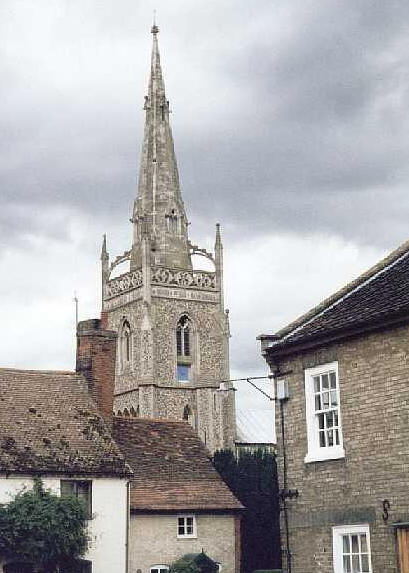|
The Mystery of the Green Children of
Woolpit
They wandered around bewildered for a few minutes, before being discovered by the reapers and taken to the village. Here the locals gathered round and questioned them, but no-one was able to understand the language the children spoke, so they were taken to the house of local landowner Sir Richard de Calne (or Colne), a few miles away at Wikes (or Wakes). At de Calne;s house they broke into tears and for some days refused to eat the bread and other food that was brought to them. But when newly-shelled beans with their stalks still attached were brought in the starving children immediately made signs that they were desperate to eat. However, when the children took the beans they opened the stalks rather than the pods, and finding nothing inside, began weeping again. After they had been shown how to obtain the beans, the children survived on this food for many months until they acquired a taste for bread. As time passed the boy, who appeared to be the younger of the two, became depressed, sickened and died, but the girl adjusted to her new life, and was baptized. Her skin gradually lost its original green colour and she became a healthy young woman. She learned the English language and afterwards married a man of the nearby town of Lavenham (or King's Lynn, in the neighboring county of Norfolk, accounts vary), apparently becoming 'rather loose and wanton in her conduct'. After a few years, she was left a widow. Some sources claim that she took the name 'Agnes Barre' and the man she married was a senior ambassador of Henry II. It is also said that the current Earl Ferrers is descended from her through intermarriage. When questioned about her past the girl was only able to relate vague details about where the children had come from and how they arrived at Woolpit. She stated that her and the boy were brother and sister, and had come from 'the land of Saint Martin' where it was perpetual twilight, and all the inhabitants were green in colour like they had been. She was not sure exactly where her homeland was located, but another 'luminous' land could be seen across a 'considerable river' separating it from theirs. She remembered that one day they were looking after their father's herds in the fields and had followed them into a cavern, where they heard the loud sound of bells. Entranced, they wandered through the darkness for a long time until they arrived at the mouth of the cave, where they were immediately blinded by the glaring sunlight. They lay down in a daze for a long time, before the noise of the reapers terrified them and they rose and tried to escape, but were unable to locate the entrance of the cavern before being caught. Originating in the 12th century, the strange fairy-tale-like story of the Green Children remained in the popular imagination throughout subsequent history, as testified by references to it in Robert Burton's The Anatomy of Melancholy, written in 1621, and a description based on the original sources in Thomas Keightley's The Fairy Mythology (1828). There was even a supposed second sighting of Green Children in a place called 'Banjos' in Spain, in August 1887. However the details of this event are almost exactly the same as in the Woolpit case and the story seems to originate with John Macklin in his book Strange Destinies (1965). There is nowhere called 'Banjos' in Spain and the account is merely a retelling of the 12th century English story. Sources
Ralph of Coggeshall, living in Essex, the neighbouring county to Suffolk, certainly would have had direct access to the people involved in the case. In fact he states in his Chronicle that he had frequently heard the story from Richard de Calne himself, for whom 'Agnes' worked as a servant. In contrast, William of Newburgh, living in a remote Yorkshire monastery, would not have had such first-hand knowledge of events, though he did use contemporary historical sources, as is indicated when he says 'I was so overwhelmed by the weight of so many and such competent witnesses'. Richard de Calne and his house at 'Wikes' have never been traced. However, there is a Wakes Colne Manor in neighboring Essex - a few miles away from Coggeshall, one wonders if there has been some confusion in the transcription of the story here. What evidence there is for Agnes supposedly marrying a senior ambassador to Henry II is unclear. The only traceable senior ambassador with this name at that time is Richard Barre, chancellor to Henry II, archdeacon of Ely and a royal justice in the late 12th century. After 1202, Richard retired to become an Austin canon at Leicester, so it is seems unlikely that he was the husband of Agnes. Explanations for the Green Children
A local legend links the Green children with the 'Babes in the Wood' folktale first published in Norwich in 1595, and probably set in Wayland Wood, close to Thetford Forest on the Norfolk-Suffolk border. The story concerns a medieval Norfolk earl who was the uncle and guardian of two young children, a boy aged three and a younger girl. In order to inherit their money the uncle hires two men to take them into the woods and murder them, but they are unable to perform the deed and abandon them in Wayland Wood where they eventually die of starvation and exposure.. The Woolpit variation moves the story to Woolpit Wood, just outside the village, and has the children surviving attempted arsenic poisoning, to emerge onto Woolpit Heath where they were found by the reapers. Arsenic has been put forward by some as the reason for the children's' green skin, and the possibility that they were real-life 12th century 'babes in the wood', or feral children, which inspired the folktale cannot entirely be discounted. The most widely accepted explanation at present was put forward by Paul Harris in Fortean Studies 4 (1998). His theory is roughly as follows. First of all the date for the incident is moved forward to 1173, into the reign of King Stephen's successor Henry II. There had been a continued immigration of Flemish (north Belgian) weavers and merchants into England from the 11th century onwards, and Harris states that after Henry II became king these immigrants were persecuted, culminating in a battle at Fornham in Suffolk in 1173, where thousands were slaughtered. He theorizes that the children had probably lived in or near to the village of Fornham St. Martin, hence the St. Martin references in their story. This village, a few miles from Woolpit, is separated from it by the River Lark, probably the 'very considerable river' mentioned by the girl in account. After their parents had been killed in the conflict, the two Flemish children had escaped into the dense, dark woodland of Thetford Forest.
Harris's ingenious hypothesis certainly suggests plausible answers to many of the riddles of the Woolpit mystery. But the theory of displaced Flemish orphans accounting for the Green Children does not stand up in many respects. When Henry II came to power and decided to expel the Flemish mercenaries previously employed by King Stephen from the country, Flemish weavers and merchants who had lived in the country for generations would have been largely unaffected. In the civil war battle of Fornham in 1176, it was Flemish mercenaries, employed to fight against the armies of King Henry II, who were slaughtered, along with the rebel knights they had been fighting alongside. These mercenaries would hardly have brought their families with them. After their defeat, the remaining Flemish soldiers scattered throughout the countryside, and many were attacked and killed by the local people. Surely a landowner like Richard de Calne, or one of his household or visitors, would have been educated enough to recognise that the language the children spoke was Flemish. After all it must have been fairly widespread in eastern England at that time. Harris's theory of the children hiding out in Thetford forest, hearing the bells of Bury St. Edmunds and being led through underground passages to Woolpit also has problems of geography. First of all, Bury St. Edmunds is 40km from Thetford forest; the children could not have heard church bells over such a distance. In addition, the flint mines are confined to the area of Thetford forest, there are no underground passages leading to Woolpit, and if there were, it is almost 50km from the forest to Woolpit, surely too far to walk for two starving children. Even if the Green Children originated from Fornham St. Martin, it is still a 16km walk to Woolpit, and as to the 'considerable river' mentioned by the girl - the River Lark is far too narrow to qualify for this. Folklore and FairiesThere are many
aspects of the Woolpit tale which are found in English folk beliefs and
fairy tales, and
some researchers see the Green Children as personifications of nature, related to the
Green Man or Jack-in-the-Green of English folklore, and even the weird
Green Knight of Arthurian myth. Perhaps the children are related to the
elves and fairies which until a century or two ago, were believed in
without question by many country folk. If the Green Children story is a
fairytale, then it has the unusual twist of the girl never returning to
her otherworldly home, but remaining married and living as a mortal.
Perhaps Ralph of Coggeshall's slightly enigmatic comment that the girl was
'rather loose and wanton in her conduct' is a suggestion that she had
retained some of her fairy wildness. Indeed, the girl's description of her
own St. Martin's Land is close to a traditional description of Fairie,
such as described by author Juliana Horatia Ewing in 1871 -
She found herself on a
sort of open heath, where no houses were to be seen. Of course there
was no moonshine, and yet it was neither daylight nor dark. There
was as the light of early dawn, and every sound was at once clear and
dreamy, like the first sounds of day coming through the fresh air
before sunrise. Juliana Horatia Ewing - 'Amelia and the Dwarfs' (from the collection The Brownies and Other Tales, 1871). The colour green has always been associated with the fairies, the otherworld and the supernatural. The children's fondness for green beans does suggest another link with the otherworld, as beans were said to be the food of the dead. In Roman religion, the Lemuria, was an annual festival in which people used offerings of beans to exorcise the evil ghosts of the dead (the Lemures) from their homes. In ancient Greece, Rome and Egypt, as well as in Medieval England, beans were believed to contain the souls of the dead. That the Green
Children of Woolpit story is included in two 12th century sources should
not be taken as proof of its genuineness. It must be born in mind
that medieval chronicles, though describing political and religious
events, also listed many signs, wonders and miracles that would not be
accepted today, but were widely believed at the time, even by educated men
and women. Perhaps then, the strange apparition of the Green Children was
a symbol of disturbed and changing times intermingled with local mythology
and folk beliefs of the afterlife. Or it may even be one of the earliest
English fairy tales we have. Whatever the truth of the matter, unless
descendents of 'Agnes Barre' can be traced, as some have suggested, or
further contemporary documentary evidence unearthed, the story of the
Green Children will remain one of England's most puzzling mysteries. Copyright 2007 by Brian Haughton. All Rights Reserved.Sources and Further ReadingAppleby, J.T. The Troubled Reign of King Stephen. G. Bell & Sons Ltd. 1969. Briggs, K.M. A Dictionary of Fairies. Penguin Books Ltd. 1977. Briggs, K.M. 'Folklore in Nineteenth-Century English Literature', Folklore, Vol. 83, No. 3. (Autumn, 1972), pp. 194-209.
Haughton, B. 'The Strange
Tale of the Green Children', in
Hidden History: Lost Civilizations, Secret Knowledge, and Ancient
Mysteries.
Moore, S. (ed). Fortean Studies: No. 4. John Brown Publishing. 1998. Oman C. C. 'The English Folklore of Gervase of Tilbury', Folklore, Vol. 55, No. 1. (Mar., 1944), pp. 2-15.
Shuker, K. The Unexplained: An Illustrated Guide to the World's Natural
and Paranormal Mysteries.
Carlton Books Ltd. 2003.
Read more |
Advertise on Mysterious People


 The two original sources
for this unexplained story are
both from the 12th century.
The two original sources
for this unexplained story are
both from the 12th century. 
